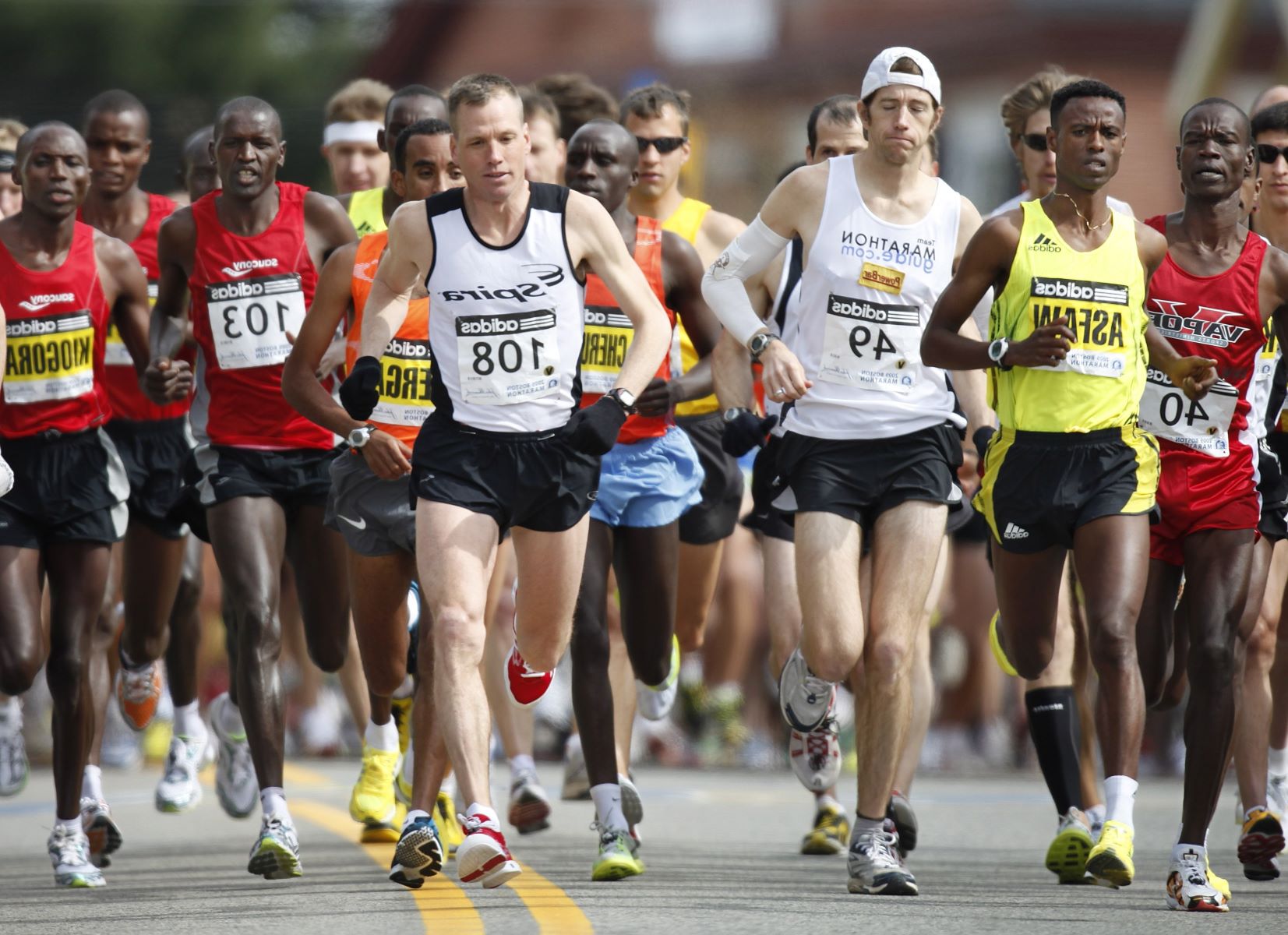Home>Training & Techniques>Training Plans>Achieve Your Fastest Mile With This Effective Training Plan


Training Plans
Achieve Your Fastest Mile With This Effective Training Plan
Published: March 4, 2024
Achieve your fastest mile with our effective training plans. Get ready to reach your running goals with our expertly designed program. Start today!
(Many of the links in this article redirect to a specific reviewed product. Your purchase of these products through affiliate links helps to generate commission for Therunningadvisor.com, at no extra cost. Learn more)
Table of Contents
Understanding the Components of a Fast Mile
To achieve your fastest mile, it's essential to understand the key components that contribute to this impressive feat. A fast mile is not solely about raw speed; it encompasses a combination of endurance, strength, and mental fortitude. By comprehending these components, you can tailor your training plan to optimize your performance and achieve your mile time goals.
First and foremost, endurance plays a pivotal role in conquering the mile. Endurance training builds the foundation for sustaining a fast pace over the entire distance. It involves gradually increasing your running distance to enhance cardiovascular fitness and muscular endurance. By incorporating long runs and steady-state workouts into your training regimen, you can boost your aerobic capacity and improve your body's ability to efficiently utilize oxygen during intense efforts.
In addition to endurance, speed is a crucial element in mastering the mile. Speed workouts, such as interval training and tempo runs, are instrumental in developing the necessary leg turnover and stride efficiency to propel you towards a faster mile time. These workouts challenge your body to operate at higher speeds, ultimately improving your overall pace and race performance.
Furthermore, mental resilience is a key component of a fast mile. The ability to push through discomfort and maintain focus during the intense effort of a mile race is a skill that can be honed through mental training. Visualization techniques, positive self-talk, and race-specific mental preparation can empower you to conquer the mental barriers that often accompany the pursuit of a fast mile.
Understanding the multifaceted nature of a fast mile empowers you to approach your training plan holistically. By integrating endurance, speed, and mental fortitude into your training regimen, you can optimize your performance and work towards achieving your fastest mile.
Setting Realistic Mile Time Goals
Setting realistic mile time goals is a fundamental aspect of devising an effective training plan. It involves a thoughtful assessment of your current fitness level, past performance, and aspirations for improvement. By establishing attainable yet challenging mile time goals, you can create a roadmap for progress and stay motivated throughout your training journey.
When setting mile time goals, it's crucial to consider your current capabilities. Reflect on your recent race times and training paces to gauge your baseline performance. This self-assessment provides valuable insights into your strengths and areas for improvement, serving as a reference point for setting realistic goals. Embracing a growth mindset and acknowledging your potential for advancement is pivotal in this process.
Moreover, historical data can offer valuable benchmarks for goal setting. Analyzing your past race performances and training achievements enables you to identify patterns and track your progress over time. Whether you're aiming to shave seconds off your personal best or achieve a significant breakthrough, leveraging past data can inform your goal-setting strategy and instill confidence in your ability to reach new milestones.
In addition to self-assessment, it's essential to factor in the external influences that can impact your mile time goals. Consider environmental conditions, course elevation, and race dynamics when formulating your targets. By accounting for these variables, you can set realistic goals that accommodate potential challenges while remaining ambitious and inspiring.
Furthermore, aligning your mile time goals with your broader aspirations can fuel your motivation and commitment to the training process. Whether you aspire to compete in a specific race, qualify for a prestigious event, or simply outperform your previous efforts, anchoring your goals to meaningful objectives enhances their significance and relevance.
Ultimately, setting realistic mile time goals involves a balance of introspection, data analysis, and forward-looking ambition. By embracing a holistic approach to goal setting, you can cultivate a clear vision of your desired outcomes and embark on a purpose-driven training journey aimed at realizing your full potential.
Building Endurance and Speed through Interval Training
Interval training stands as a cornerstone in the pursuit of a faster mile time, effectively targeting both endurance and speed to elevate overall performance. This structured approach to training involves alternating between periods of high-intensity effort and active recovery, delivering a potent stimulus for physiological adaptation and performance enhancement.
Endurance development is a central focus of interval training, as it challenges the cardiovascular system to adapt and become more efficient in delivering oxygen to working muscles. By incorporating longer intervals at a sustained, challenging pace, runners can elevate their aerobic capacity and bolster their ability to maintain a swift tempo over the mile distance. These prolonged efforts not only enhance cardiovascular endurance but also cultivate mental resilience, preparing athletes to tackle the demands of race day with confidence and composure.
In tandem with endurance gains, interval training significantly amplifies speed and anaerobic capacity, crucial elements for achieving a fast mile. Shorter, high-intensity intervals push the boundaries of speed and power, fostering neuromuscular adaptations that translate to improved running economy and accelerated pace. By repeatedly challenging the body to operate at intensities beyond its comfort zone, runners can refine their stride mechanics, optimize their turnover rate, and unleash their full speed potential.
The versatility of interval training allows for tailored workouts that cater to individual fitness levels and performance objectives. Whether executing classic track sessions, such as 400-meter repeats or mile intervals, or embracing fartlek-style workouts that blend varying intensities within a single run, interval training offers a dynamic and adaptable framework for honing both endurance and speed.
Furthermore, the structured nature of interval training instills discipline and intentionality into the training regimen, fostering a sense of purpose and progression. By consistently integrating interval workouts into the training plan, runners can systematically elevate their physiological thresholds, refine their race-specific fitness, and cultivate the mental tenacity required to conquer the mile distance.
In essence, interval training serves as a potent catalyst for building the endurance and speed necessary to achieve a fast mile. By embracing the diverse array of interval workouts and harnessing their transformative potential, runners can fortify their physical and mental capabilities, ultimately propelling themselves towards their fastest mile performance.
Incorporating Strength Training for Mile Improvement
In the pursuit of mile improvement, the integration of strength training stands as a pivotal strategy that transcends traditional notions of running performance. While endurance and speed are undeniably crucial in mile conquest, the inclusion of targeted strength exercises can yield profound benefits, enhancing overall athleticism, injury resilience, and race-specific performance.
The implementation of a well-rounded strength training regimen serves to fortify the musculoskeletal system, addressing muscular imbalances, enhancing stability, and bolstering power output. By engaging in exercises that target key muscle groups, such as the quadriceps, hamstrings, glutes, and core, runners can cultivate a more robust and resilient foundation, mitigating the risk of overuse injuries and optimizing running mechanics.
Furthermore, strength training contributes to the development of explosive power and muscular endurance, attributes that directly translate to improved mile performance. Plyometric exercises, such as box jumps and bounding drills, foster neuromuscular coordination and enhance the body's capacity to generate force with each stride. This heightened power output can propel runners towards a swifter pace and facilitate the maintenance of speed throughout the mile distance.
Incorporating resistance training, such as weighted squats, lunges, and deadlifts, augments muscular strength and endurance, amplifying the body's ability to withstand the rigors of intense race efforts. Strengthening the lower body musculature not only enhances running economy and stride efficiency but also contributes to injury prevention, enabling runners to sustain consistent training and race participation.
Moreover, the inclusion of core-strengthening exercises, such as planks, Russian twists, and leg raises, fosters a stable and engaged torso, essential for maintaining proper posture and form during the dynamic demands of mile racing. A strong and stable core not only optimizes running mechanics but also minimizes energy wastage, allowing runners to channel their efforts towards propelling themselves forward with maximum efficiency.
By integrating strength training into the overall training plan, runners can cultivate a well-rounded athletic foundation, elevating their physical resilience, power, and efficiency. This holistic approach to mile improvement transcends the confines of traditional running workouts, empowering athletes to unleash their full potential and conquer the mile distance with strength, speed, and unwavering determination.
Rest and Recovery: Essential Elements of a Successful Training Plan
Rest and recovery are indispensable components of a successful training plan, playing a pivotal role in optimizing performance, preventing injuries, and sustaining long-term progress. While the focus is often placed on the intensity and volume of training, the significance of adequate rest and strategic recovery practices cannot be overstated.
Rest serves as the foundation upon which training adaptations manifest, allowing the body to repair and rebuild following the physiological stress incurred during workouts. It is during periods of rest that the body undergoes crucial reparative processes, such as muscle tissue repair, glycogen replenishment, and hormone regulation. Embracing rest as an integral part of the training cycle is essential for sustaining overall health and well-being, as well as fostering the conditions necessary for performance enhancement.
Strategic recovery practices, including active recovery sessions, foam rolling, and targeted stretching, further complement the restorative benefits of rest. Active recovery sessions, characterized by low-intensity activities such as gentle jogging or cycling, facilitate blood circulation and aid in the removal of metabolic by-products, expediting the recovery process. Additionally, incorporating foam rolling and targeted stretching into the post-workout routine can alleviate muscular tension, enhance flexibility, and promote tissue regeneration, contributing to expedited recovery and reduced injury risk.
Furthermore, adequate sleep stands as a cornerstone of effective rest and recovery, exerting profound influences on physiological restoration, cognitive function, and emotional well-being. Prioritizing quality sleep duration and consistency is instrumental in optimizing training adaptations, bolstering immune function, and fortifying mental resilience. By embracing sleep as a non-negotiable aspect of the training plan, athletes can harness its transformative potential in enhancing overall performance and recovery capacity.
In essence, rest and recovery are not passive elements of the training process but rather active contributors to athletic development and longevity. By recognizing the symbiotic relationship between training stress and restorative practices, athletes can cultivate a balanced and sustainable approach to performance optimization. Embracing rest and recovery as essential elements of a successful training plan empowers athletes to navigate the rigors of training with resilience, vitality, and a steadfast commitment to long-term progress.
















